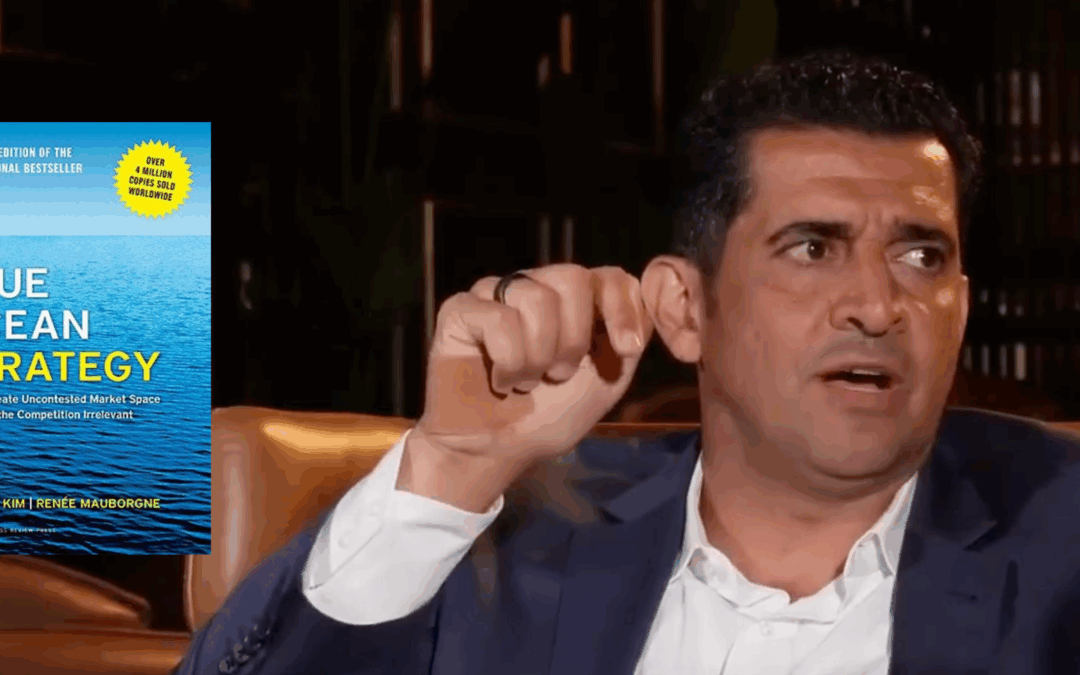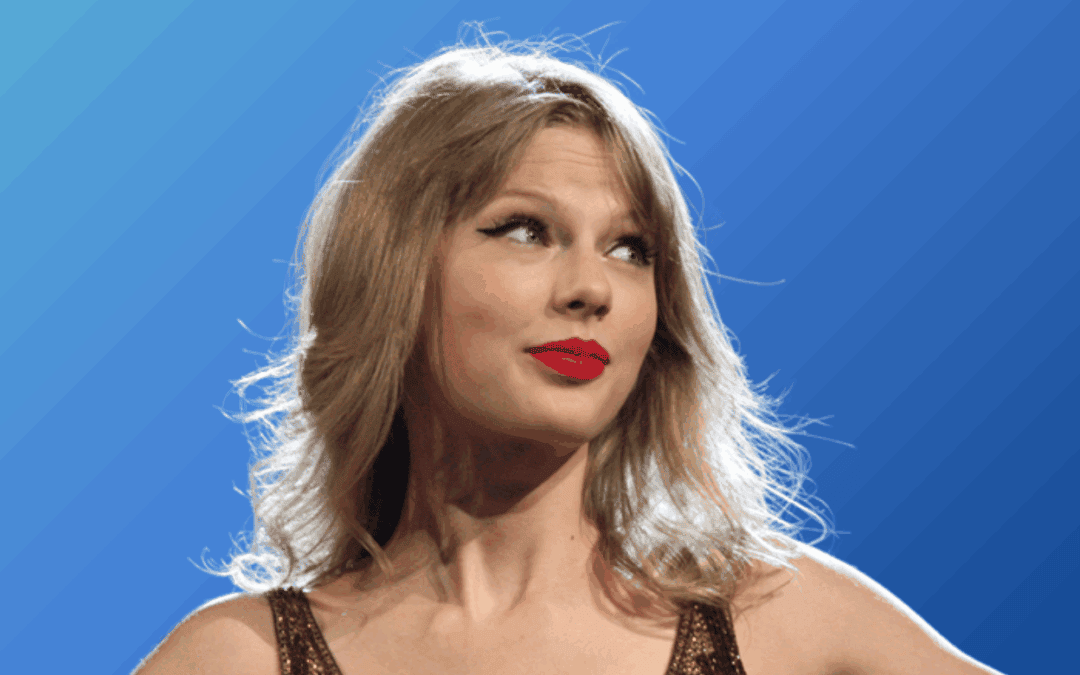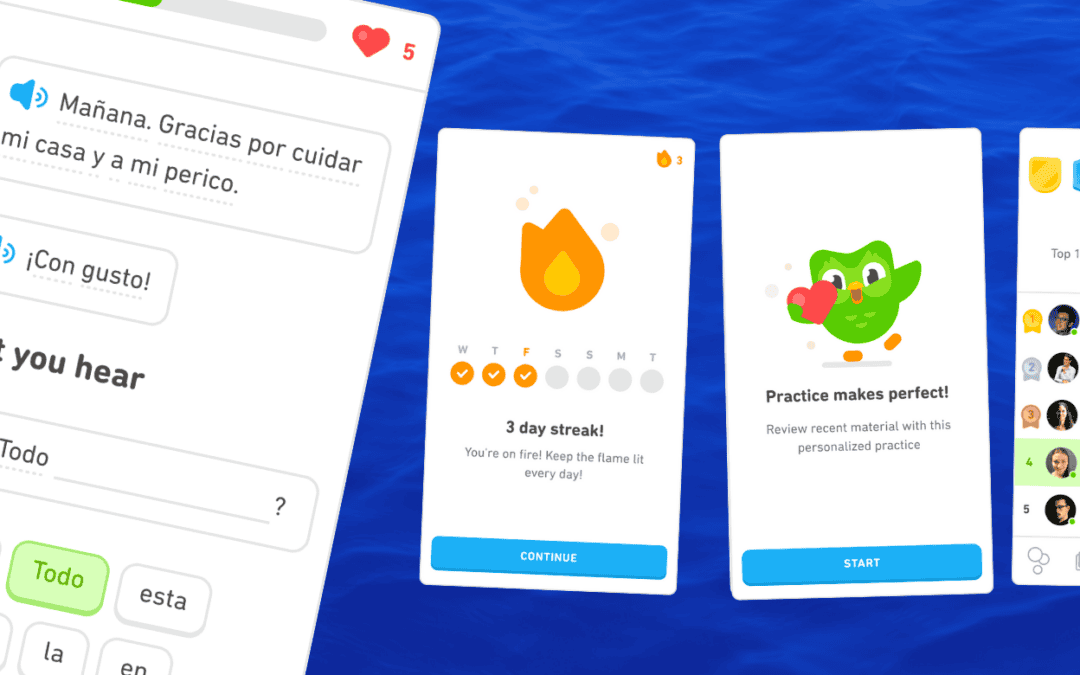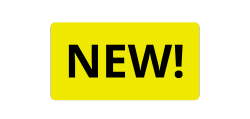Getting a good job when you are freshly graduated is tougher than ever. According to the Federal Reserve Bank of New York, about 44 percent of recent graduates are underemployed – either working full time at a job for which he/she is overqualified, or at a part-time job for which he/she is qualified. But did you know that 65 percent of the students do not get in touch with their university career centers? Cindy Funk – Director of the Career Center at Vanderbilt University set out to break out of the red ocean and turn that situation around. Here is how.
The Blue Ocean Strategy Team: What was the problem with traditional career centers that made you look to blue ocean strategy?
Cindy Funk: Competition for top students is stiff among universities as they strive to move higher in the rankings. By attending a top school like Vanderbilt, parents and students expect that it will result in getting good jobs and internships and being admitted to graduate and professional top schools. But traditional career services lack efficiency in preparing students as their offer is profoundly disconnected from students’ campus experience. They basically organize campus recruiting and help the students with their resumes. But many students do not have a direction at graduation and the word “career” does not resonate with them.
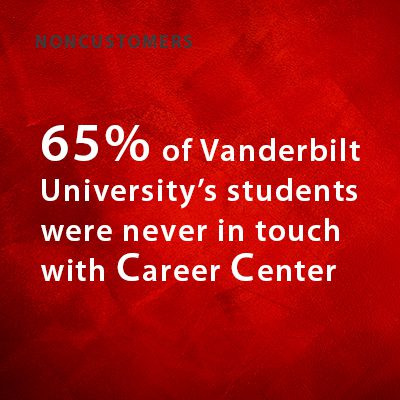
What made our blue ocean initiative imperative was that a good number of students – and this is typical of any college – do not engage in a Career Center process unless it is required of them. Think about that. In the case of Vanderbilt about 65% of students were never in touch with us. They were effectively our noncustomers. Why? They never contacted us because they did not know our center, they did not connect with the name of our office and they did not understand how we would be able to help them. Hence we looked at how we could provide a different type of careers service to really help students position themselves for success and also make the university stand out. So for a high school student who is trying to choose between our university and another one, our office can be seen as a selling point as the offer is different.
The BOS Team: How did you turn uninterested students (i.e. your noncustomers) into engaged, customers of Vanderbilt university career services?
CF: Instead of waiting for the students to come to us, we went to the students. For example, our first-year students are assigned to an orientation group. We now go to orientation leaders and teach them critical career skills they can use such as how to best present themselves to new students, answer their questions effectively, and ask the right questions in return.

Vanderbilt university career services: “The whole process took about a year”.
In this way they develop their natural career skills and get to practice using them before having to use them with companies for a job. By integrating with students in that activity we are now helping to prepare them much more effectively. Another example is reaching out to work directly with student organizations. We have peer coaches and students leaders that work with our office. They are taught to use some of our tools for professional development, which allows them to bring these to their student members and use these methods in the classroom. Both of these approaches provide applied learning, helping to make more career-ready students.
Vanderbilt University Career Center took the blue ocean approach
Blue ocean strategy helped us think about different ways of helping students to talk to an employer during an interview. – Cindy Funk
For example, instead of offering a traditional workshop where the students learn basic interview skills, we teach them how to tell their story in any context. During the information session when students come to Vanderbilt to learn about our campus, a large number of student volunteers would do what we call an Admission Tour.
They have to tell their stories to these groups of families and prospective students. And if they can tell their story there, they can also tell their story to an employer or to anybody they need. That’s an invaluable skill in your career, which we now reach out to students to teach.
Vanderbilt University Career Center took the blue ocean approach
The BOS Team: What actions did you take in order to stand apart yet achieve lower cost – which is the essence of blue ocean strategy?
CF: We used the Four Actions Framework, the Eliminate-Reduce-Raise-Create (ERRC) Grid and the Strategy Canvas to pursue differentiation and low cost. This allowed us to differentiate ourselves while keeping costs low so that we were able to serve more students with the same resources. Let me give you two examples of what we eliminated/reduced that were highly visible. There was a resource library with plenty of books in our Vanderbilt Career Center that nobody was using as everything is online now. By eliminating these books we created a much more modern environment that students can relate to, and can now use the space in different, more effective ways. We also reduced the use of traditional career assessments.
We wanted to do something different, less conventional and integrated into the college experience. One of the assessments we introduced is called the Wandering Map. This exercise is highly engaging as it helps students discover themes and patterns that have shaped their lives and what they are passionate about. The Wandering Map is a very short and creative exercise that helps students identify what drives them and therefore what studies and professions would be a good fit for their interests.

Vanderbilt university career services: “We wanted to do something different”.
Besides, we raised and created a number of factors to increase the connection and integration of our career services with the student experience. To this purpose, we changed our name. We took out the word “career” as I think that a lot of students thought they would need to have an idea on their career before they engage with us. Applied learning via peer coaching and practice was another factor we raised vis-à-vis traditional career services. This was done through cooperation with student organizations as previously mentioned.
In line with our effort to reach out to students we created a satellite office inside the first-year student’s residence – a sort of campus-within-a-campus. So we are providing services directly there, not just in our home location.
Another factor we created is a connection versus a placement focus for campus recruiting. Placement is to help student get a job with companies coming to campus. And, of course, we still do that. But by connection our aim is to build opportunities by engaging alumni and parents, and connecting them with students. Through that connection we aim to create a new pathway for students to get a job or internship. The focus is on building experiences where students have the opportunity to learn about the workplace from alumni and parents. Through the engagement of these stakeholders, students have the opportunity to develop relationships and make connections which will potentially lead to opportunities and help them better understand their career interests. As I explained earlier, we also created the focus on teaching students to tell their stories in any context so that they learn how to best present themselves in future professional encounters.
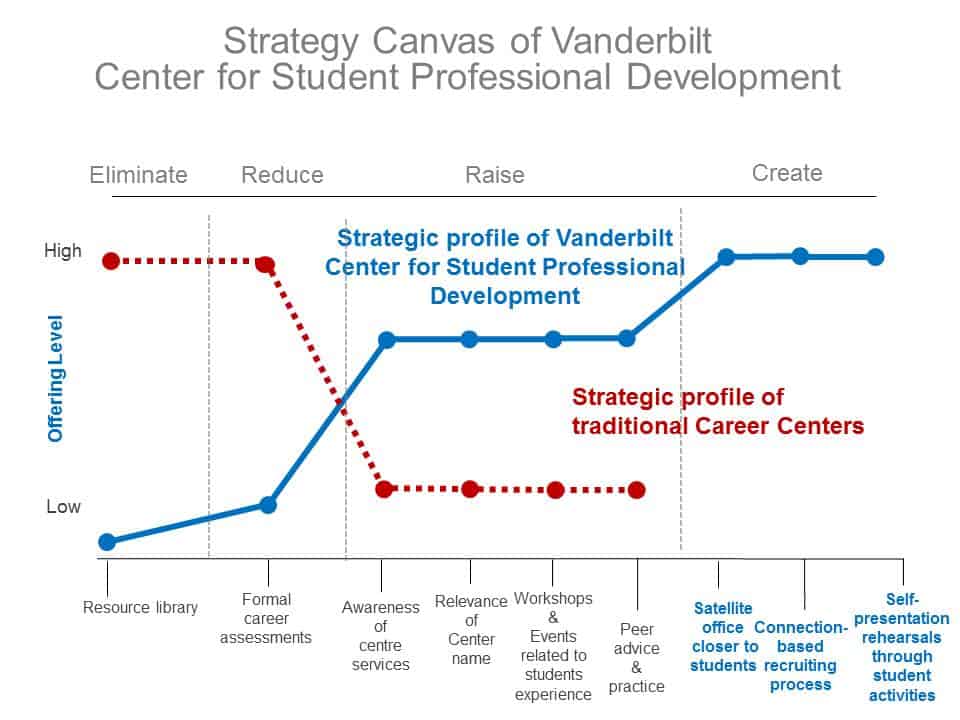
Vanderbilt university career services strategy canvas
The BOS Team: Could you tell us a bit the process of your strategy development? Who was involved?
CF: Stephanie Brodtrick introduced us to the approach of blue ocean strategy created by W. Chan Kim and Renée Mauborgne. She is an organization effectiveness consultant with Vanderbilt University Human Resources whom we have worked with for several years now. She had been using blue ocean strategy at Vanderbilt University Medical Center and believed that blue ocean strategy would be really efficient for us to look at. Two members of my leadership team, Stephanie Brodtrick and I decided to go forward with it. We had strategic planning sessions where we stepped back, used the Four Actions Framework and applied it to our organisation. Thanks to this tool, we have been able to identify what we needed to do differently and who we wanted to be.
The whole process took us about a year. It was fast and easy to go through the blue ocean strategy tools and frameworks and to identify what we had to do. Last year in July, all staff engaged in our blue ocean initiative attended an all-day staff retreat. The exercise was to examine “How do we connect students to opportunities?” The staff was divided into four groups and they had to identify the factors to eliminate, reduce, raise, or create in our goal to connect students to opportunities.
Through this process we had numerous discussions with Vanderbilt faculty and staff, employers, alumni and parents. This allowed us to identify critical skills for students ranging from identifying their own strengths and interests, to being able to talk about themselves professionally, to leveraging personal connections and networks.

Vanderbilt university career services have turned noncustomers into customers.
The BOS Team: What results have you seen?
CF: We have increased the percentage of students who have engaged in a professional development activity by significant numbers. Last year we had about 44% of our first-year students who have turned into our customers. And that is huge as they are here for four years. The earlier we start working with students, the higher their business/professional acumen will be when they get to be a senior. We also had a significant increase of the second year students who are working with our office and the employment rate of the last two years continues to rise. Additionally, the percentage of students using the Center’s resources rose 8.5 percentage points from 2013 to 2014. Students are really engaged much more, and they are taking smart risks.
Let me give you one heart-warming example that traces back to our new initiative to help students tell their story better. One of the challenges students have, particularly in the science area, is that it is hard to articulate a science idea and to communicate this complex idea succinctly. We have a student who applied for an internship last year at a Science Marine Group in Florida that only hires graduate students. She was second year so they did not hire her. But she has been so passionate about this group since high school that she kept in touch with them. She attended our “How do you tell your story” training and she applied again. But this time, she talked about her work and showed how passionate she was and it really captured their imagination. They ended up creating a position for her. That is the kind of small example of significant successes that we are seeing, and there are a lot of them.
That said, we are also on our way to create an assessment and reporting system for measuring learning outcomes.
To this purpose, we have hired a data intelligence analyst, which is not a staffing position typically found in career services. We plan to implement an assessment plan related to learning outcomes this summer.
The BOS Team: How was your strategy implementation? Did you encounter significant challenges?
CF: The implementation went fairly easily and we had a lot of support when we presented our plan. I had to pitch it to my provost, who is the senior leader at the University, and I told him that 65% of our student never contacted us and really needed help and also when I shared with him the feedback I have been receiving, this has precipitated the need for a change, beside the fact that we wanted to be different. Students had some gaps and we wanted to address those gaps. My provost agreed that this new direction was the right one to engage students and told us to move forward.
Now, however, with several changes in the leadership of the University, we are seeing that there is some disconnect. It is a paradigm shift for Vanderbilt, and while they appreciate that its important for our center to offer students a leap in value for their career prospects, it is hard for some people to understand that although what we do like teaching students to tell their stories and make connections appears not to be about jobs and internships, ultimately it is about jobs and internships.
To continue to move forward, we now need to spend more time explaining our new strategy to the University’s new leadership and key decision-makers so they can understand the rationale for the strategy, how it provides a leap in value to students and is very much aligned with the University’s overarching strategy and the mission of the career centers — to provide a step-change in the career prospects of our students.
The BOS Team: What are the key insights you learned by applying blue ocean strategy?
CF: Applying blue ocean strategy to career services is about taking business principles and applying them to higher education. And it really works effectively. It can be successfully applied in higher education and in career services. And the whole process in itself was really helpful. In fact, I pulled out the article on Blue Ocean Leadership last fall, and it made me think that there is so much more we could do.
Recently, I have been talking about our blue ocean strategy at the National Career Development Conference in California and when people heard about our blue ocean initiative they found it awesome. I think that the blue ocean strategy theory is phenomenal. It makes a lot of sense. You are not competing; you are trying to stand out. And that is what we are trying to do: to make a step-change difference to the lives of our students.



